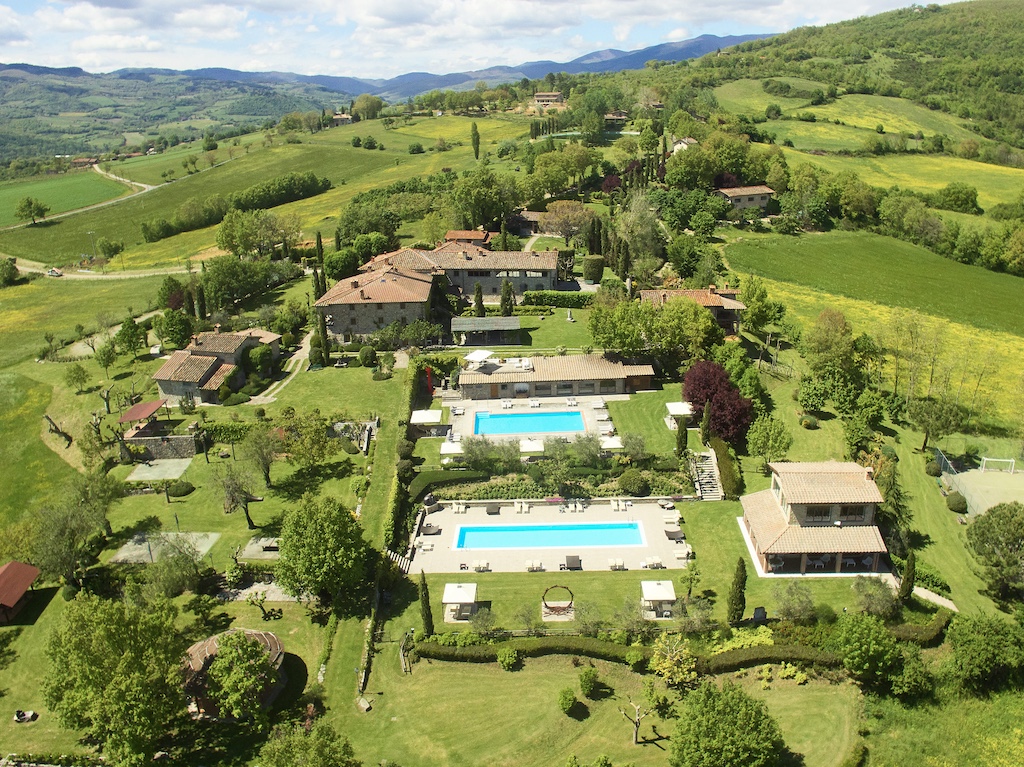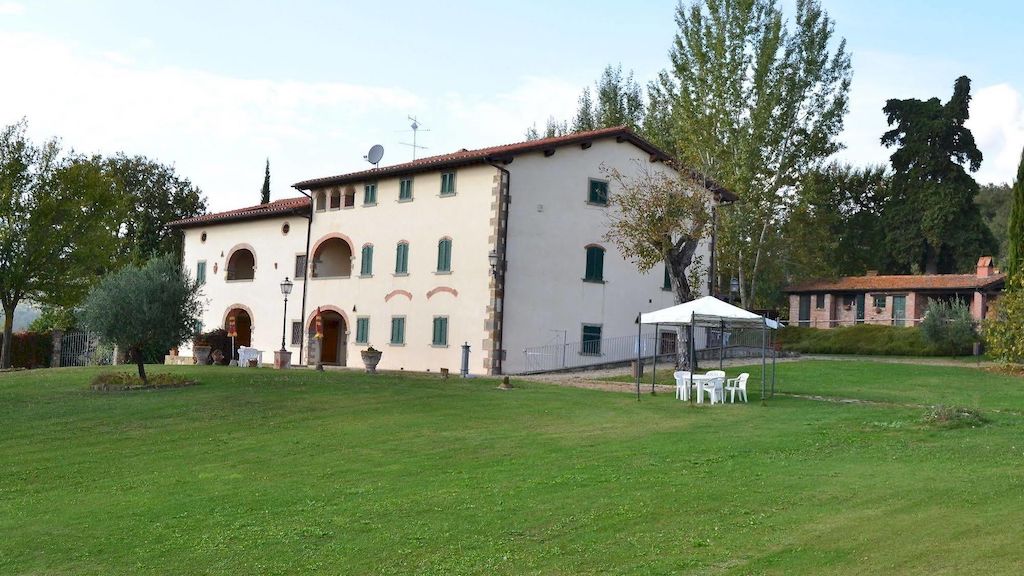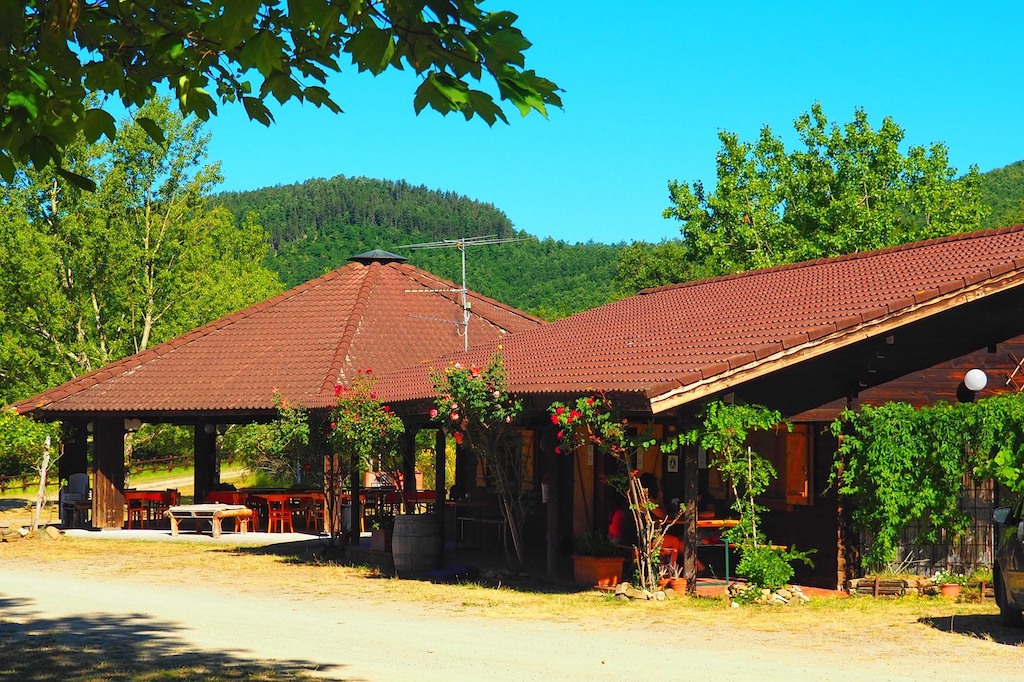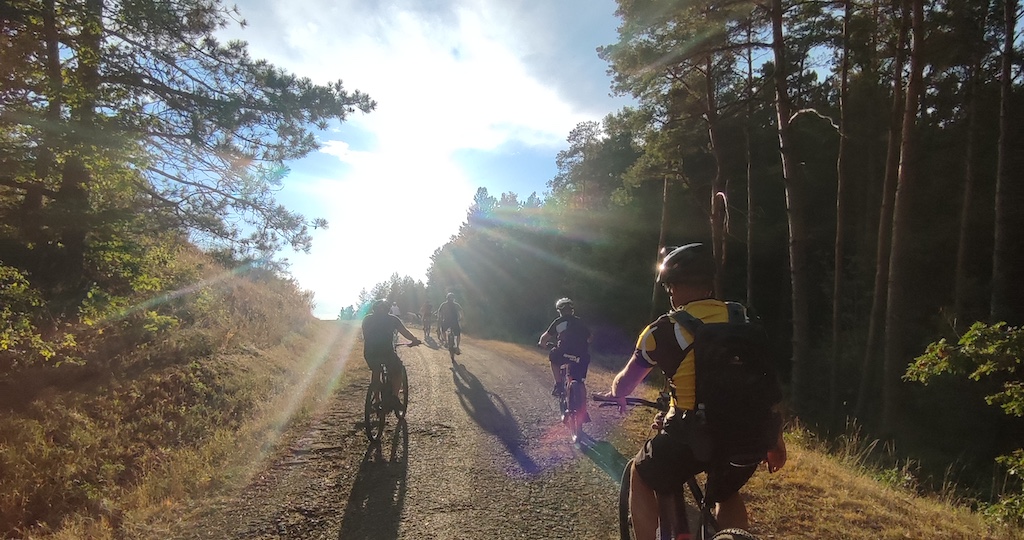
Borgo Corsignano
Stretching between Florence and Arezzo, this beautifully secluded, wide, oval-shaped valley is surrounded by gentle hills which gradually ascend to mountains, on one side climbing to reach the impressive Apennines and on the opposite side to the Pratomagno, whose ridge separates Casentino from the Chianti region on the other side. This ring of mountains which has prevented the spread of motorways and major railways, preserving the valley’s natural state.These ancient woods are packed with wild boar, deer, porcini mushrooms and well-marked hiking trails. Casentino is where Dante wrote parts of his Divine Comedy and it’s where Saint Francis of Assisi received his stigmata. It is only 50 minutes from Florence, 50 minutes from Arezzo, and if you head to Pontassieve from Florence, you can drive up 1,050 metres to Consuma, the historic mountain pass between Emilia Romagna and Tuscany and do what droves of Italians do to escape the Florentine summer heat: eat some of Italy’s best schiacciata and loll about in the mountain shade.
Casentino is often called La Toscana Nascosta (Hidden Tuscany), and cursory looks at Internet and print travel guides suggest that most completely ignore this gorgeous area of the region. But if you like discovering the real Italy, and I mean non-touristy trattorias with local, fresh food where only Italian is spoken, off-the-beaten-track walks and high-altitude air that’s so fresh you can bite it, an adventure in Casentino is for you.
An old Camaldolese farm, Borgo Corsignano is even cited in the Geographical and Physical History dictionary of Tuscany by Repetti, which tells of the donation of the small farm to Eremo di Camaldoli in 1037 by the Bishop of Arezzo, Emmone. The donation was confirmed by Emperor Arrigo III in 1047.
The property was bought by the Lorj family at the beginning of the 1990s, reunifying the small farm which had previously been divided between various properties.
The renovation work, which started in 1993 with the architect Roberto Mariottini, retained the integral link with the past, remained faithful to the original style of the buildings and emphasised their traditional elements, paying great attention to detail.





Leave a Reply